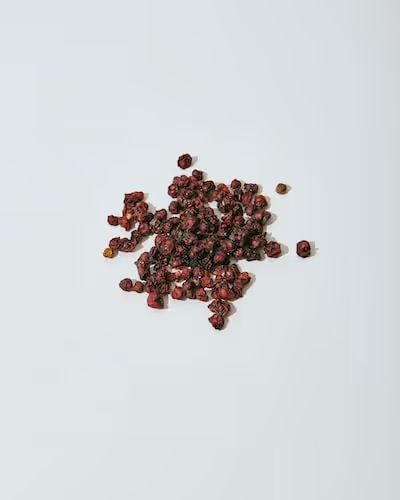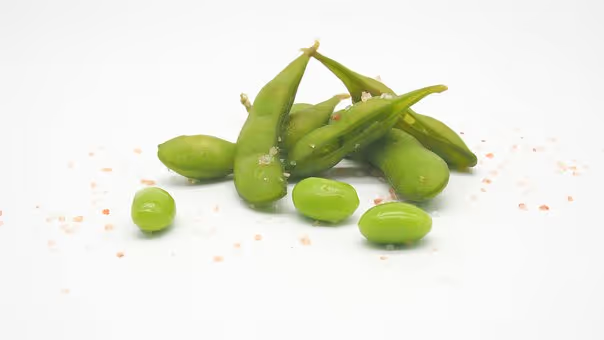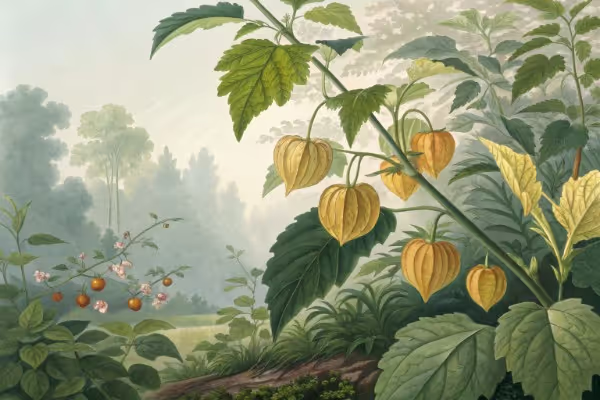Growing Watermelon: Simple Steps for Sweet Summer Harvests

Growing Watermelon
Growing watermelon rewards gardeners who plant seeds in warm, loose soil drenched by full sun. Sow seeds directly outdoors once soil temperatures exceed 70°F, spacing them generously to let vines sprawl. Feed your melon plants compost-rich soil and regular watering, and you'll savor ripe, juicy fruits by late summer—keep reading to learn more tips on growing watermelon successfully.
Cheatsheet: Watermelon Growing Made Easy
🌱 Choose the Right Variety
Icebox (small), Crimson Sweet, Sugar Baby for most gardens. Short-season types suit cooler zones.
🌞 Warmth & Sun
Needs 8+ hours full sun. Soil temp: 70°F/21°C+ for germination. Don't plant too early.
🌿 Soil Prep
Use well-draining, sandy soil. Add compost. pH 6.0–6.8 ideal.
🛠️ Tools and Products You'll Need
- Watermelon seeds
- Compost or organic fertilizer
- Mulch (straw or plastic)
- Drip hose or watering can
- Soil thermometer
- Garden trowel
- Pruners (optional)
🚿 Planting
- Direct sow after last frost. Space hills 3-4 ft (1-1.2 m) apart.
- Sow 4-6 seeds per hill, thin to 2 strongest.
- Plant depth: 1 inch/2.5 cm.
💧 Watering
Keep soil moist, not soaked. Cut back on water as fruit ripens for sweeter melons.
🌾 Mulching
Mulch to retain moisture & block weeds. Straw or black plastic works best.
🥒 Pollination
Bees boost fruit set. Plant pollinator-friendly flowers nearby.
🐞 Pests & Problems
- Avoid standing water (prevents rot).
- Watch for cucumber beetles & aphids.
- Rotate crops yearly to reduce disease.
🍉 Harvesting
- Ready in 70-100 days after sowing.
- Harvest when tendril near fruit dries, skin dulls, underside turns creamy yellow.
- Use clean pruners to cut stem.
🌟 Health & Self-Sufficiency
Rich in vitamin C, lycopene, & water (92%). Homegrown equals pesticide-free, less waste, & better flavor.
💡 Pro Tips
- Start seeds indoors in cool climates (2-3 weeks before last frost).
- Side-dress with compost mid-season for bigger fruit.
- Turn fruit gently to prevent flat sides.
-
Growing Watermelon: Simple Steps for Sweet Summer Harvests
I plant for flavor first and yields second, and Growing Watermelon pays that back with fruit that tastes like sun and rain. The vines can sprawl like a good story, so I set the stage right from day one.
Heat, timing, and the frost clock
Watermelon seeds want warm soil, ideally 80 to 95 F or 27 to 35 C, with nights staying above 60 F or 16 C. I wait until the soil holds 70 F or 21 C by midmorning for a full week before planting.
Count backward from your first fall frost and pick varieties that mature 70 to 90 days from transplant, longer for seedless types. Cool nights slow sugar, so late plantings here get a sunnier spot or black mulch.
“Seeds germinate poorly below 70 F.” Source: Penn State Extension, Vegetable Guides
Site and soil that feed sweetness
Watermelons like a slightly acidic soil, pH 6.0 to 6.8, with sharp drainage and plenty of sun. I build low ridges or raised beds to warm the root zone fast and to shed spring downpours.
Mix in 2 to 4 inches or 5 to 10 cm of finished compost and a dusting of rock phosphate if a soil test calls for it. Cover crops like winter rye and crimson clover leave the bed loose and fed without making vines too lush.
Black plastic or IRT mulch can bump soil temps 3 to 5 C and keep fruit clean. Landscape fabric with drip under it works just as well for home beds and lasts multiple seasons.
Seeds, transplants, and spacing that fits your yard
I start seeds indoors 3 to 4 weeks before planting out, one seed per 50-cell tray, and transplant with minimal root disturbance. Plant seeds 1 inch or 2.5 cm deep if direct sowing after the soil warms.
Give compact “icebox” types 24 to 36 inches or 60 to 90 cm in-row, and big “picnic” types 36 to 60 inches or 90 to 150 cm. Run rows 5 to 8 feet or 1.5 to 2.5 m apart unless you trellis minis.
Seedless triploids need a seeded pollenizer for fruit set at about 2:1 or 3:1 seedless to seeded. I interplant one pollenizer every third hole to keep bees happy and yields steady.
Step-by-step: my simple plan for Growing Watermelon
- Warm the bed with black mulch two weeks before planting, then lay drip line at 12 to 18 inch or 30 to 45 cm spacing.
- Harden transplants for 5 to 7 days outdoors, then set them when soil is 70 F or 21 C and rising.
- Water in with a starter solution low in nitrogen and higher in phosphorus and potassium to push roots.
- Install hoops and lightweight row cover to fend off cucumber beetles, and remove covers at first bloom for pollination.
- Side-dress with a modest shot of nitrogen when vines begin to run, then again at early fruit set.
- Thin to 2 fruits per vine on big types for bragging melons, or let minis carry more.
Water and feeding without guesswork
Early on I water to keep the top 6 inches or 15 cm evenly moist, about 1 inch or 25 mm per week. During fruit swell I give 1.5 to 2 inches or 38 to 50 mm weekly on sandy soils, then taper slightly the last week for higher brix.
Too much nitrogen after runners form makes vines shaggy and fruit bland. I favor a balanced organic feed at planting, then a side-dress of calcium nitrate or fish and kelp at fruit set for steady growth.
Hollow heart comes from erratic moisture and temperature swings. Drip irrigation, mulch, and consistent scheduling prevent the cracks I used to see after hard rains.
Pollination that sticks
Each fruit starts with a female flower open for one morning, so bee traffic matters. I never spray insecticides during bloom, and I plant borage and basil nearby as pollinator magnets.
Remove row covers as soon as flowers appear, even if beetles lurk. A seeded pollenizer tucked into the block stabilizes set on seedless types and smooths fruit shape.
Training, pruning, and trellising
In tight beds I let two or three main vines run and pinch late side shoots once fruit set. Minis like ‘Sugar Baby’ and ‘Mini Love’ trellis well on cattle panels, and I cradle fruit with fabric slings.
On the ground I tuck fruit onto tiles or boards to dry the belly and avoid pillbug nibbling. Airflow cuts disease pressure, so I keep paths clear and water only at the roots.
Pests and diseases: field notes and fixes
- Cucumber beetles and squash bugs: row cover early, vacuum bugs at dawn if you can, and use yellow sticky cards to monitor. Healthy seedlings outgrow light feeding fast.
- Aphids: blast with water, then release lady beetles or lacewing larvae if populations climb. Reflective mulch slows aphid landings on young plants.
- Fusarium wilt and verticillium: rotate 4 to 5 years out of cucurbits and avoid planting where tomatoes and potatoes suffered wilt. Grafted plants on disease-tolerant rootstocks are worth the cost in hot, tired soils.
- Gummy stem blight, anthracnose, powdery mildew: improve airflow, keep foliage dry, scout weekly, and prune leaves that touch fruit. Use labeled protectants if pressure spikes, and switch modes of action to avoid resistance.
- Weeds: mulch does 80 percent of the work. I hand rogue grasses near the crown so stems breathe and fruit cures cleanly.
Harvest like you mean it
I start counting 35 to 45 days from fruit set and watch the nearest tendril to the stem go brown. The ground spot turns creamy yellow, the rind loses its shine, and the thump drops pitch.
Good flavor usually lands at 10 to 12 brix, and a pocket refractometer keeps me honest. Cut with a sharp knife leaving a bit of stem, then shade fruit right away to hold sugars.
Storage and food safety
Whole melons hold best at 50 to 59 F or 10 to 15 C for a week or two without chilling injury. Rinse the rind before cutting, dry it, and refrigerate slices at 32 to 41 F or 0 to 5 C.
I sanitize knives and boards between fruits during peak season. A clean cut keeps flavors bright and texture crisp.
Top picks: varieties that earn space
- Short-season winners: ‘Blacktail Mountain’ and ‘Sugar Baby’ ripen fast in cool summers and hit solid sweetness.
- Seedless crowd-pleasers: ‘Fascination’, ‘Kingman’, and ‘Wayfarer’ set well with a good pollenizer plan and carry firm, deep red flesh.
- Classic flavor: ‘Charleston Gray’ and ‘Crimson Sweet’ deliver old-school taste with big picnic size.
- Mini marvels for trellis: ‘Mini Love’, ‘Tiger Baby’, and ‘Golden Midget’ for balconies and small beds.
- Heat and field toughness: ‘Sangria’-type striped hybrids handle stress and ship well for market gardens.
Gear that actually helps
- Soil thermometer with a clear dial so you plant at the right moment.
- Drip kit with 0.5 gph or 2 lph emitters and a simple timer to smooth out heat waves.
- Black plastic or IRT mulch and 0.5 oz or 17 g floating row cover for beetle pressure.
- Refractometer to track brix during variety trials and dial irrigation.
- Soil test every other year to steer pH and potassium for sweetness.
Troubleshooting quick hits
- Misshapen fruit: poor pollination or cold mornings during bloom. Add pollenizers and flowers for bees, then try again next flush.
- Hollow heart: moisture swings during fruit swell. Lock in drip schedules and mulch deeper.
- Sunscald: leafy canopy too thin. Ease up on pruning, and slide fruit under a leaf or a tile shade.
- White seeds in seedless types: weak pollination. Increase pollenizer ratio and stagger bloom times.
Numbers that tell the story
“Average U.S. per capita watermelon availability was about 15 pounds in recent years.” Source: USDA Economic Research Service, Fruit and Tree Nuts Yearbook
“Watermelon is about 92 percent water.” Source: USDA Agricultural Research Service, FoodData Central
Extension guidance lines up with field experience here: warm soils speed germination, steady moisture builds density, and late nitrogen washes flavor. For deeper reading, see University of Georgia Extension, North Carolina State Extension, Penn State Extension, UC ANR, and USDA ERS reports.
A few field-worn habits that paid me back
I plant two weeks earlier on black mulch, then plant a second wave bare soil for insurance. That split saved a season when a cold snap stalled the first set.
I prune late to expose fruit lightly for color, but I leave enough leaf to keep the rind cool. On harvest mornings the vines smell like hot sand and sugar, and that is how I know the patch is in tune.
Frequently Asked Questions About Growing Watermelon
What is the ideal time to plant watermelon seeds outdoors?
Sow watermelon seeds outdoors after the soil temperature reaches at least 70°F (21°C). Ideal planting occurs in late spring or early summer when the risk of frost has passed.
How much sunlight do watermelons require for vigorous growth?
Watermelon plants thrive in full sun, needing at least 8 hours of direct sunlight daily. This ensures vigorous vine growth and healthy fruit development.
What soil conditions best support watermelon development?
Opt for loose, well-draining sandy loam soil with a slightly acidic to neutral pH between 6.0 and 7.0. Incorporating organic compost enhances soil fertility and moisture retention.
How far apart should watermelon plants be spaced?
Space watermelon plants approximately 36 to 60 inches (90–150 cm) apart in rows, allowing sufficient room for sprawling vines and adequate air circulation.
How often should watermelon plants be watered?
Consistent watering is essential—about 1 to 2 inches (2.5–5 cm) per week. Maintain even moisture without saturating soil, especially as fruits approach maturity.
When can watermelons be harvested?
Watermelons typically mature within 70–90 days after planting. Indicators include a dull fruit skin, a pale underside spot, and drying tendrils near the fruit stem.
Growing Watermelon is about patience, sunlight, and a little bit of sweat. The payoff? Summer’s sweetest, juiciest bite straight from your own patch. Start with rich soil, give those vines room to sprawl, and don’t skimp on the water when the heat cranks up. Pollination matters—invite the bees in. Watch for that telltale creamy spot underneath before picking. Respect the process, and you’ll get fruit that tastes like childhood and sunshine.
If you’re hooked on homegrown flavor, try your hand at cantaloupes or pumpkins—they thrive on the same principles. At the end of the day, growing watermelon is about getting your hands dirty and letting nature do its thing. Keep it simple, keep it honest, and enjoy every slice.
Pro Tips for Organic Watermelon Cultivation
Soil Preparation and Fertility
- Spread aged compost or composted manure 2–3 inches (5–7.5 cm) deep over planting area; till gently.
- Apply seaweed meal or alfalfa pellets as slow-release nitrogen sources to boost microorganism activity.
- Check and maintain soil pH between 6.0–6.8 for optimal nutrient uptake and sweet fruits.
Beneficial Companion Planting
- Plant watermelon near radishes or nasturtiums to attract aphids away from vines.
- Surround melon patch with marigolds and oregano to repel cucumber beetles and squash bugs effectively.
- Integrate legumes like bush beans nearby to fix nitrogen naturally and enhance soil fertility.
Efficient Organic Pest Control
- Release ladybugs and lacewings to eliminate aphid populations naturally.
- Apply neem oil solution (2 teaspoons neem per quart/liter water) weekly until flowering to deter pests like spider mites.
- Protect young plants with lightweight row covers; remove once blossoms emerge for pollination.
Watering Techniques for Sweeter Fruit
- Use drip irrigation or soaker hoses to provide consistent, deep watering (approximately 1–2 inches/2.5–5 cm per week).
- Reduce water slightly once melons reach maturity to intensify sweetness without stressing plants.
- Water early in the morning to minimize leaf diseases and fungal issues.
Boosting Fruit Sugar Content Naturally
- Apply diluted molasses (1 tablespoon per gallon/3.8 liters water) as foliar feed once fruit sets to increase natural sweetness.
- Dust soil lightly with wood ash mid-season to deliver potassium and trace minerals promoting fruit sugars.
Harvest and Storage Tips for Peak Freshness
- Harvest watermelons in early morning; sugar content peaks overnight due to cooler temperatures.
- Store harvested melons at 50–60°F (10–15°C) and 85–90% humidity to maintain freshness for up to two weeks.
- Consume promptly after cutting to maximize nutritional value—high in vitamins A, C, lycopene, and hydration benefits.
Find out which plants will thrive in your garden!
Answer a few fun questions and get custom plant recommendations perfect for your space. Let’s grow something amazing together!

start your season





